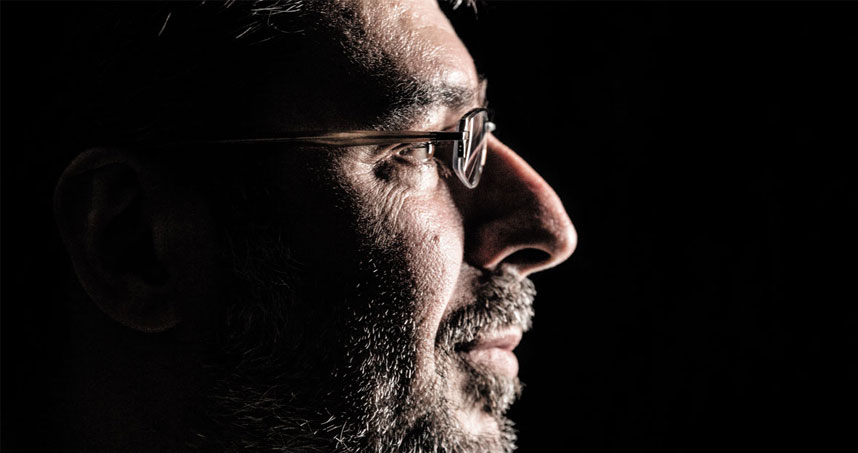Solving Big Problems with Big Data
With solutions-focused pragmatism and an engineering mindset, Luís Amaral identifies intersections and patterns to understand complex, seemingly unrelated issues.
How does an engineer think?
By seeing the simplicity in the complex, and the complexity in the simple. That’s how Luís A. Nunes Amaral can look at airport systems and human cells and find similar networks.
Amaral, Erastus Otis Haven Professor of Chemical and Biological Engineering, uses big data and the skills of engineering—measuring rigorously, uncovering patterns, and identifying system symmetries—to build frameworks for approaching vastly different complex problems.
“He looks at big data to solve the intractable problems of our day,” says co-collaborator Teresa Woodruff, director of the Women’s Health Research Institute at Northwestern University Feinberg School of Medicine. “He’s fearless in his desire to match big problems with big data.”
Amaral’s discoveries in one area of study often inform later work on a seemingly dissimilar topic. In a study about airport systems, for example, Amaral and his team learned that larger airports, like Chicago’s O’Hare International, are more connected to other highly connected major hubs, like San Francisco International, than one would expect.
“That’s because the number of people flying into airports must balance the number of people flying out. People are not collecting in one place. They are leaving and returning,” the native of Portugal says. “There’s a balance, a type of conservation required.”
Sometime later, while studying the body’s metabolic network, Amaral recognized echoes of the airport network system. “The metabolic network carries molecules. They come in, are transformed, and about the same number leave,” he says. “You don’t want things accumulating. Again, there is a balance. The need for conservation determines the structure of the network.”
Research at the Intersections
All of Amaral’s studies examine complex systems that involve the intersections of physical, chemical, biological, and social inter-actions. “When many components interact, you have emergence—things that couldn’t exist without all these components coming together,” says Amaral, who also serves as co-director of the Northwestern Institute on Complex Systems. “It makes predicting what will happen very hard.”
In studying intersections, he has examined a disparate array of social issues, from the connection between school shootings and unemployment, to the relationship between participation in online communities and weight loss, to the persistence of gender discrimination in genomics.
Collaborating at the Frontiers
Amaral credits Northwestern’s culture of collaboration among departments and disciplines for enabling him to work so deeply on such diverse topics. “My collaborators are some of the best in the world in their fields,” he says. “You can get to the frontier of knowledge very fast. It’s incredibly rewarding intellectually, and to me, it’s the most fun in the world to learn from such knowledgeable colleagues.”
“As engineers, we see a problem, and we want to solve it. Sometimes, in the challenging ‘real world,’ there are roadblocks to progress. Engineers can’t wait for everything to be perfect to solve a problem. We must work toward an answer.”
Currently, Amaral is working on two projects with Northwestern’s Feinberg School of Medicine. One study, funded by the US Army, looks at creating best practices to help physicians, nurses, and other medical providers avoid potentially deadly errors.
“All the pressure to treat so many patients puts physicians in a difficult position,” he says. “Medical mistakes cause 440,000 deaths each year. That’s a huge, scary number. We’re looking to help clinicians avoid mistakes in ways that fit into their workflow without adding to the pressures they already feel.”
In the other project, funded by the National Institutes of Health, Amaral is collaborating with critical care and pulmonary medicine researchers at Feinberg to study aging and what happens at the molecular level. The research is based on big data collected from mouse studies.
“There will be an enormous amount of information,” he says. “One of the challenges in a study with this much data is seeing things that look like explanation but turn out not to be. The trick will be to find patterns that are reliable and real.”
“Luís is always anxious to find the next problem and examine it to discover solutions,” says Woodruff, who is also dean of The Graduate School. “He’s able to find the signal through the noise.”
Mixing Open-mindedness, Teamwork, and Pragmatism
The key to Amaral’s work, he says, is keeping an open mind. “Don’t go in thinking that you know what you’ll find at the end,” he advises. “Understand that your initial hypothesis could be wrong. You might find something even more interesting. Don’t be afraid to change course.”
The importance of teamwork is a lesson he tries to pass on to students. “It’s important to be an effective worker within a team,” he says. “I tell students: Step back and assess your strengths. Be confident in your abilities, but evaluate the competence andknowledge of others. They might have strengths where you don’t. This is how to build a team that works effectively.”
No matter the topic, Amaral always brings an engineer’s pragmatism. “As engineers, we see a problem, and we want to solve it,” he says. “Sometimes, in the challenging ‘real world,’ there are roadblocks to progress. Engineers can’t wait for everything to be perfect to solve a problem. We must work toward an answer.”

